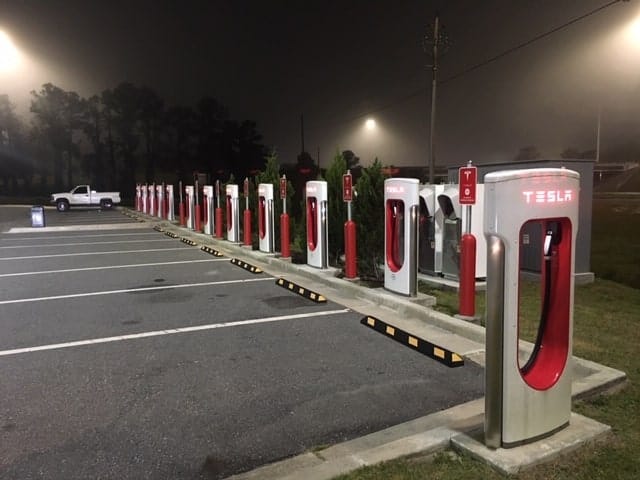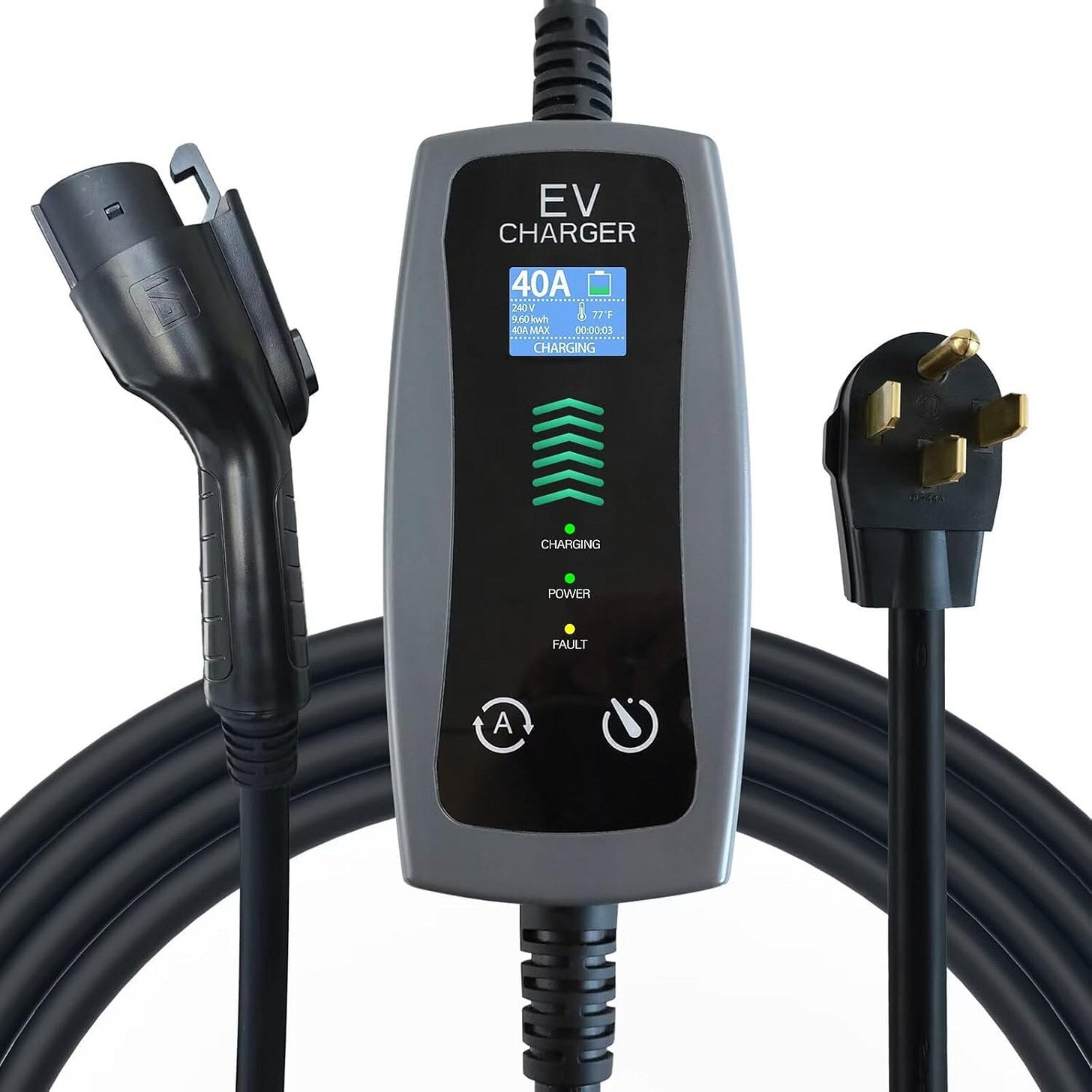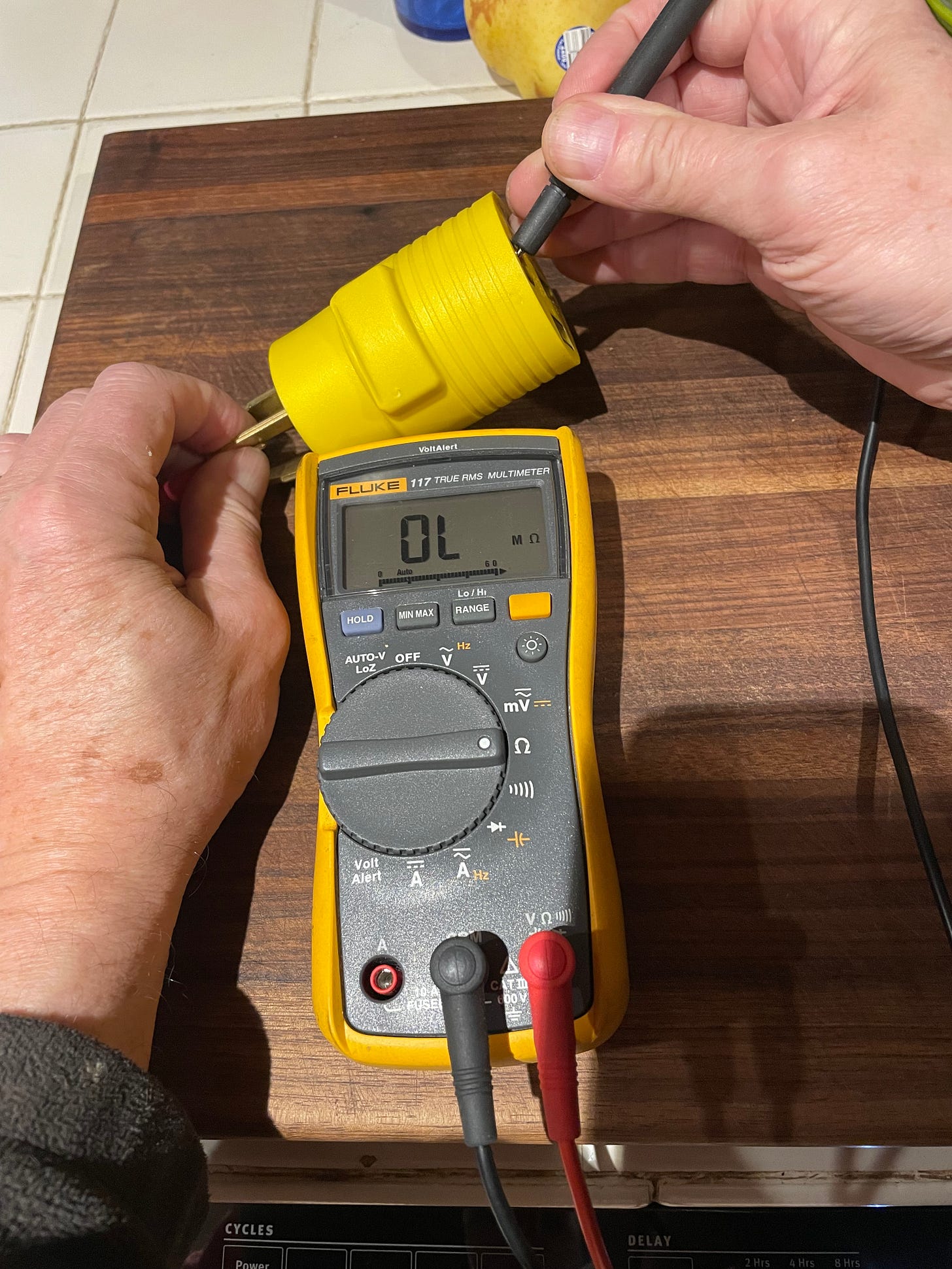Can an RV be plugged into an EV charging station?
Power, power everywhere, but not for your RV...
Everyone,
A few years ago I wrote a post about the line of Tesla EV charging stations I saw in Live Oak, FL and received some interesting questions about what kind of dogbone adapter would be needed to connect your RV to a Level-3 EV charger.
However, those are DC chargers with up to 800 volts, so there’s no way you could ever plug your RV shore power cable into one. So don’t even think about it!!!
But what about Level-2 residential charging stations?
After all, the theory goes, since many EV manufacturers supply a special charging cable for their electric cars that would plug into an RV 50-amp campground pedestal, shouldn’t the reverse work? And note that many residential Level-2 EV chargers use a NEMA 6-50 receptacle.
Danger, Will Robinson…
So, does anyone sell a dogbone adapter that will go from the NEMA 6-50 outlet feeding a Level-2 EV car charger to a NEMA 14-50 shore power connector on an RV?
The answer is while that sort of adapter cable does indeed exist on eBay, NO you DO NOT want to connect your RV to any 240-volt outlet feeding a EV charger (or any other 50-amp/240-volt electric car charger for that matter). Doing so can risk extensive damage to your RV as well as the charging station circuit.
What an RV needs…
Here’s why: As you all should know by now, the 50-amp shore power connection for an RV is a 4-wire circuit, consisting of 2 hots, 1 neutral and 1 ground wire. And while it does indeed measure 240 volts between the 2 hot lines, the neutral wire is what allows you to derive a pair of 120-volt circuits.
That’s because virtually everything in an RV (except for some of the largest coaches) uses 120 volts. The neutral wire is the only thing equally dividing the incoming 240 volts into 120/120 volts for the two 50-amp circuits. Lose the neutral and the 240 volts feeding the pedestal no longer divides into equal 120-volt legs. It can go as crazy as 200 volts on one leg with 40 volts on the other leg. Not good for your electronics!
What an EV needs…
Because EVs use 240 volts for their Level-2 chargers, the manufacturers don’t bother running a neutral wire to a NEMA 6-50 receptacle for power.
And I’ve also seen a number of 14-50 RV receptacles installed in residential garages without the neutral conductor. This is how most Level-2 EV chargers are installed (until you get into the 480-volt/3-phase supercharger versions). That saves money and copper, and is perfectly safe for 240-volt-only circuits.
Don’t buy this…
However, you can buy an adapter cable that will allow you to plug your RV’s 50-amp shore power connector (a NEMA 14-50) into what’s basically a welding outlet (a NEMA 6-50 receptacle) that’s been installed to power a Level-2 EV charging station. And while this may appear to work properly at low amperage, if you pull appreciable 120-volt current in your RV, the smaller gauge ground conductor in the branch circuit can fail, opening up your RV’s neutral path with very bad consequences.
Also, some of these adapters don’t even bother to connect the neutral contact on the female 14-50 side to the male 6-50P ground contact, leaving it float. Yikes!
Why is this bad?
What’s happening is the neutral current (which can reach up to a full 50 amperes) is improperly returning into the ground wire (officially called the EGC or Equipment Grounding Conductor). That can actually overheat and damage the ground connections for not only that outlet, but other outlets in the area as well.
If that ground wire (that your RV is treating as a neutral) opens up or otherwise loses connection, then the split-phase 240/120-volt divider no longer works, as I mentioned above. This load current on the ground conductor can also create a hot-skin voltage on anything else plugged into that feeder or branch circuit.
And that’s why using the ground wire in a NEMA 6-50 receptacle for split-phase neutral currents is a code violation. The ECG ground is only there to create a fault-current path to the service panel’s Neutral/Ground bonding point in the event of a short circuit somewhere, not be a replacement for the neutral load conductor. Here’s a pic of a ground short circuit test in my FunkWorks Lab. The fault current reaches 105.4 amperes for less than 20 milliseconds before the 30-amp circuit breaker trips.
So YES, you can plug your EV into a campground pedestal’s 50-amp outlet. But NO, you can’t plug your RV into a a NEMA 6-50 or 14-50 receptacle without a Neutral Conductor that’s powering a Tesla (or any other manufacturer’s) Level-2 EV charging station. It’s a code violation and dangerous to try. So just don’t do it!
Let’s play safe out there…. Mike













Mike, if I tested this outlet without a neutral, how would it look?
Would I get any reading at all for L1 to neutral, or L2 to neutral?
Seems like this is another good reason to always check the pedistal/plug before llugging in.
so in europe it whould be fine? All our devices use 230V any way, an the type 2 chargers have 1 or 3 phase 230V.